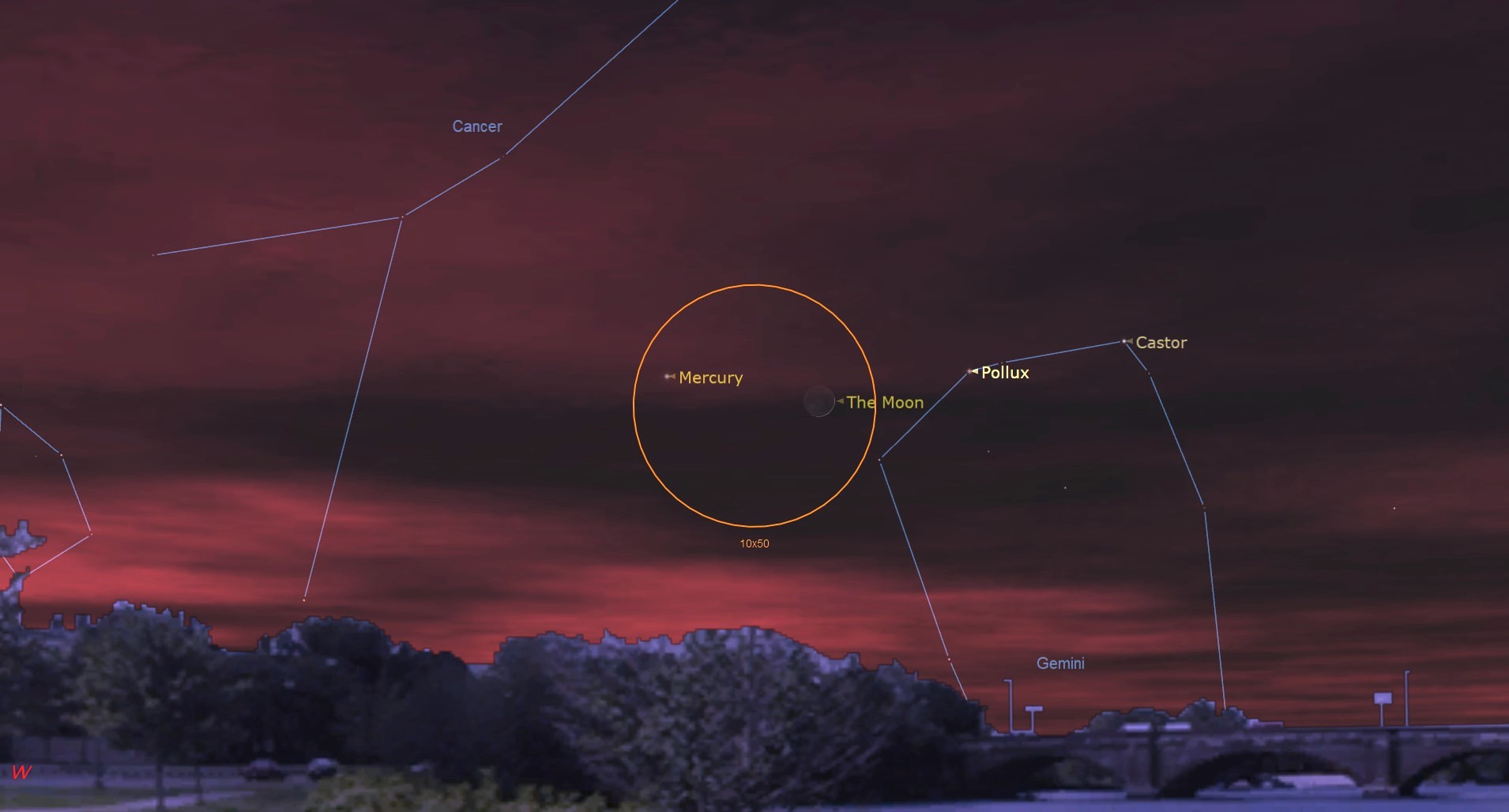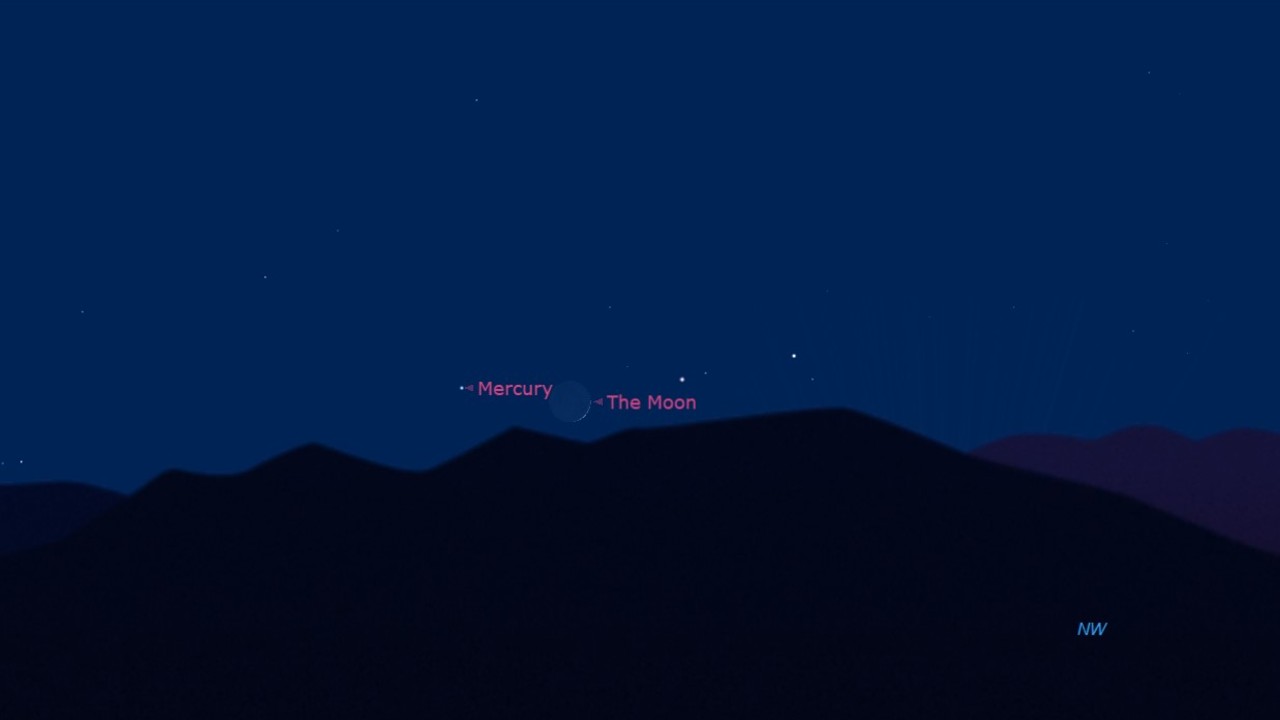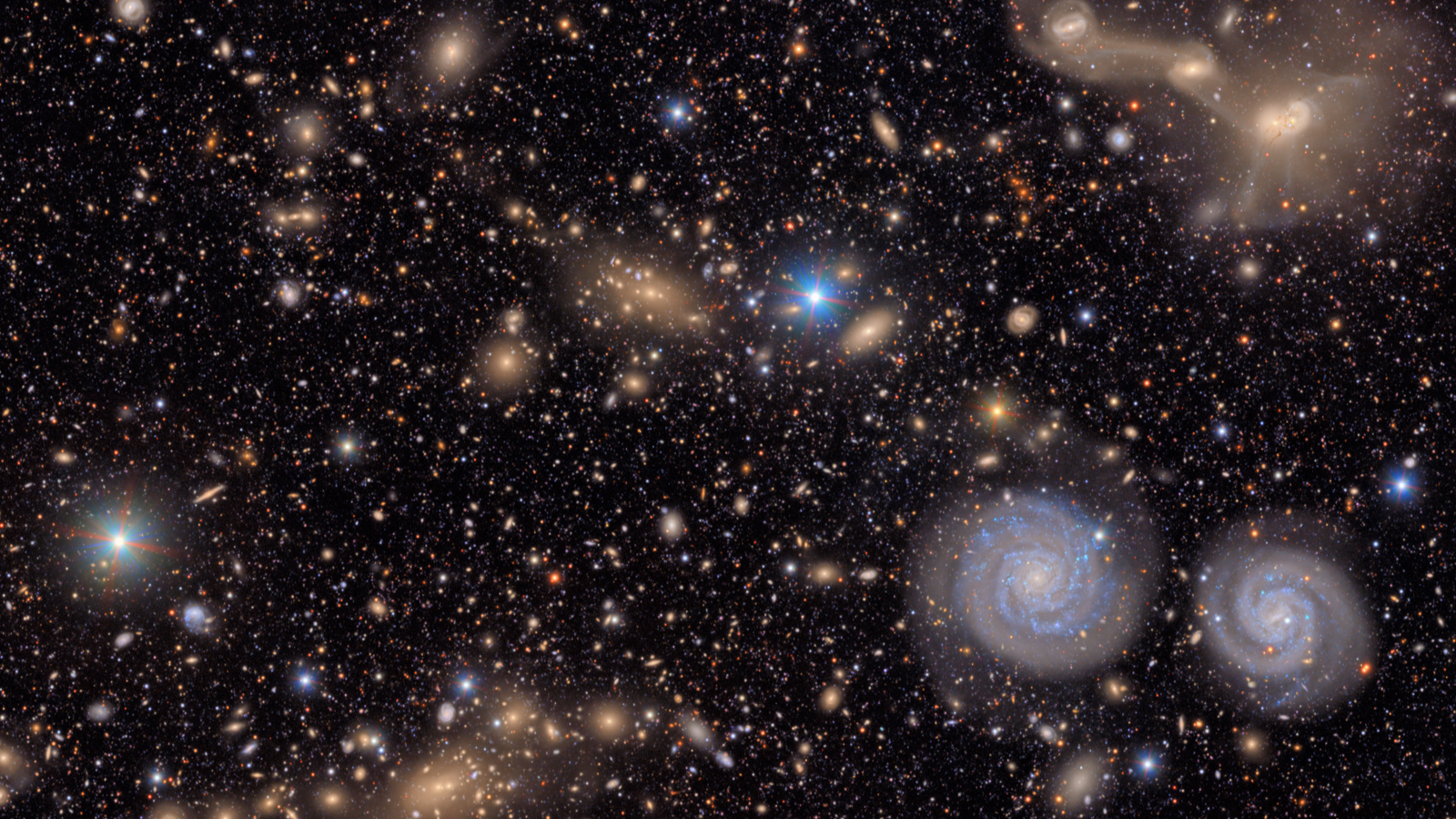
During the final week of June and continuing into the first week of July, we'll have a fair chance at sighting Mercury, the innermost planet to the sun.
Many people have never noticed that Mercury swings rapidly back and forth relative to the sun in our sky, while moving along in an orbit scarcely more than half as far from the sun as Venus.
This fastest-moving and smallest major planet (only 1.4 times wider than the moon) orbits the sun 4.15 times a year, but from our own moving vantage point it appears to go around only 3.15 times. Each year it makes about 3.5 swings into the morning sky and as many times into the evening — excursions of highly unequal character because of its eccentric orbit and the varying angles from which we view it.
Typically, as seen from the Northern Hemisphere for after-sunset views of Mercury, its spring treks into the evening skies prove to be the best. Although it did not occur officially within the spring season, this year's first evening apparition that ran from Feb. 23 through March 15 was an excellent one, since for a few days centered around the date of its greatest elongation from the sun (March 8), Mercury set just after the end of evening twilight against a dark sky.
Another opportunity
Now, this speedy, rocky little world is again available to view in the evening sky, although on this occasion, not a "spring" apparition, but more like early summer, encompassing the timeframe from June 20 through July 11. This time, Mercury's greatest elongation from the sun will come on July 4. During this current evening apparition, Mercury's climb out of the west-northwest horizon comes at a steeper angle and yet it will attain an altitude essentially as high above the setting sun as it did in late February and early March.
What is different this time around is that it is now early summer, not late winter. So, from mid-northern latitudes, the duration of evening twilight is longer by about 30 minutes. As such, unlike in early March, we cannot hope to glimpse Mercury against a dark sky.
However, during its evening appearances, Mercury always appears brightest in the days leading up to its greatest elongation. On June 20, it shone at magnitude -0.2, brighter than the similarly-hued star Arcturus, the second brightest behind Sirius as seen from northern latitudes. By July 3 it will have faded to a still respectably bright magnitude of +0.5, which would rank it among the top ten brightest stars in the sky. So, it should not be too difficult to sight against the twilight sky, low in the west-northwest about 45 minutes to one hour after sunset.
Breaking space news, the latest updates on rocket launches, skywatching events and more!
And during this week, we'll have some help in identifying it thanks to some other celestial landmarks.
First lineup: June 24

Want to get close-up views of planets in the night sky? The Celestron NexStar 4SE is ideal for beginners wanting quality, reliable and quick views of celestial objects. For a more in-depth look at our Celestron NexStar 4SE review.
On Tuesday evening, June 24, Mercury will form a nearly straight line with two bright stars; the Gemini Twins, Pollux and Castor. Going from right to left, the distance between Castor and Pollux measures 4.5 degrees. If you were to draw an imaginary line between these two stars and extend it another 6.5 degrees to the left, you will come to Mercury.
Or, put another way, if you make a clenched fist and hold it out at arm's length, that will measure roughly 10 degrees. The distance from Mercury to the star Castor (going from left to right) should measure a bit more than one fist width, or about 11 degrees.
In addition, keep in mind that Mercury will appear much brighter than either Pollux and Castor. On this night, Mercury will shine at zero magnitude, while Pollux will appear only about a third as bright at magnitude +1.1 and Castor only about one quarter as bright at magnitude +1.6. So, while it's likely that you'll be able to see Mercury with your naked eye, Pollux and Castor will likely be more difficult to see amidst the twilight glow. So be sure to have a pair of binoculars on hand to help you see these Twin Stars teamed up with Mercury.
Remember: if you're looking for a telescope or binoculars to observe Mercury or any other night sky event, our guides for the best binoculars deals and the best telescope deals now can help.
Second lineup: June 26
Two evenings later, on Thursday, June 26, another celestial wanderer will appear on the scene — the moon. Only a little over 1.5 days past the new moon phase, it will appear as a very narrow, wire-thin crescent, a mere 3 percent illuminated by the sun. Here again, binoculars will prove most beneficial in helping to find not only Pollux and Castor, but this exceedingly slender lunar sliver.
But what an amazing scene awaits you if you are successful in making a sighting.
On this evening, Pollux and Castor will be pointing directly at the moon and the gap separating this trio will be equidistant: From Castor to Pollux will measure 4.5 degrees and from Pollux to the moon will measure another 4.5 degrees; a celestial triple play.

But don't forget Mercury.
It will be shining about 4.3 degrees to the left and ever-so-slightly above the moon. In short, four prominent celestial objects — the moon, a bright planet and two bright stars — stretched out across a little more than a dozen degrees of the west-northwest sky.
A celestial quadruple grouping!
But please keep in mind that in many parts of the country, June has a reputation for being a sultry, hazy and humid month. So unfortunately, visibility of objects so low to the horizon might hinder seeing this "celestial summit meeting." But if your local sky is clear and transparent, try not to miss it, for gatherings like this of the moon accompanied by bright stars and planets are unusual and wonderful sights.
An August encore for early risers
Mercury will quickly move away from the Gemini Twins in the days following June 26, and will rapidly fade after July 4, transitioning into the morning sky on July 31. On balmy mornings in August, get up early to see this elusive planet climbing almost straight up above the point of sunrise.
By Aug. 19, about an hour before sunrise, it will reach its highest, with the "dynamic duo" of Venus and Jupiter, respectively 15 and 22 degrees higher still. Pollux and Castor will also be nearby and on the mornings of Aug. 20 and 21, the moon will again join in too!
Mark your calendars ...
Joe Rao serves as an instructor and guest lecturer at New York's Hayden Planetarium. He writes about astronomy for Natural History magazine, Sky and Telescope and other publications.
Join our Space Forums to keep talking space on the latest missions, night sky and more! And if you have a news tip, correction or comment, let us know at: community@space.com.

Joe Rao is Space.com's skywatching columnist, as well as a veteran meteorologist and eclipse chaser who also serves as an instructor and guest lecturer at New York's Hayden Planetarium. He writes about astronomy for Natural History magazine, Sky & Telescope and other publications. Joe is an 8-time Emmy-nominated meteorologist who served the Putnam Valley region of New York for over 21 years. You can find him on Twitter and YouTube tracking lunar and solar eclipses, meteor showers and more. To find out Joe's latest project, visit him on Twitter.
You must confirm your public display name before commenting
Please logout and then login again, you will then be prompted to enter your display name.
